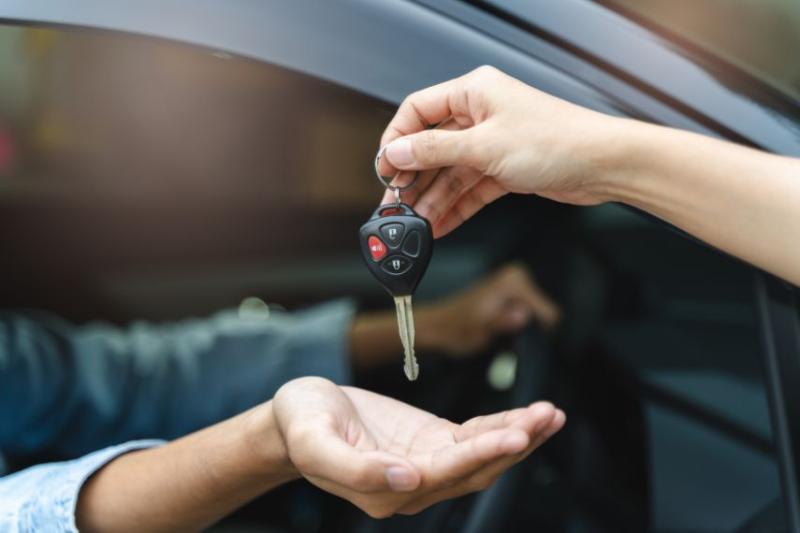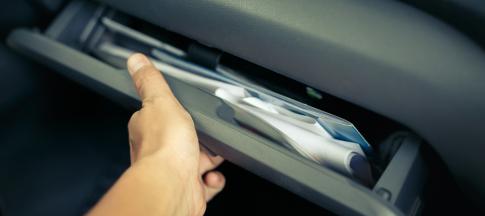
Here’s our top tips to guide you through the process of selling your car.
Selling your car privately is more than likely going to give you the best return, but it takes a little time and effort to get your vehicle sale-ready.
In a competitive market, you're going to have to make sure your car stands out from the rest, so follow our top tips to help get you a quick sale.
1. Check for outstanding finance
It's illegal to knowingly sell a car with outstanding finance. If you're still paying for your car, contact your finance company to get a settlement figure and pay this off in full before selling it.
You may also be subject to early repayment and administration fees.
If you’ve already paid half the cost of the car or more, you have the right to return the car to the finance provider under the Consumer Credit Act 1974, which is called voluntary termination.
This can make sense if, for example, it’s depreciated in value to the extent that remaining payments would add up to more than the current value of the vehicle.
If, however, the car remains worth more than the outstanding payments, it’s probably better to settle the balance with the finance company and then sell the car.
If you’re struggling to meet your finance repayments, speak to a debt advice charity for free and in confidence.
2. The price is right
One way to a speedy sale is to price the car accurately in the first place, using a valuation website to correctly value your vehicle. Consider factors such as:
- mileage
- age
- condition
- features
And remember to leave room for haggling. Fixing mechanical issues (keeping the receipts as proof) and making sure the MOT is up to date can also help attract the best price.
3. A clean sweep
It goes without saying that an immaculate vehicle is more attractive than a grubby car with crisp packets thrown into the footwell.
Make sure you remove all personal belongings from your car and do a thorough clean of the interior and exterior. You may even want to consider paying for a professional valet.
It’s also worth airing your car out by leaving the windows or doors open for an hour or two, while also adding a new air freshener to the car.
If you want to sell your car in pristine condition, you’ll also need to fix any dents or scratches to the bodywork, any chips or cracks in the glass, and any defects in the interior.
4. Advertising your car
Choose a bright, dry day to take photos of your car, taking advantage of smartphone filters to ensure the images are as sharp and shiny as possible.
What photos should I take of my car when trying to sell it?
Take a selection, including:
- the whole vehicle from the front, back and sides
- close-ups of selling points such as alloy wheels or leather seats
- the dashboard showing mileage
You can use a free, online car selling service or sites such as Gumtree or Facebook Marketplace to generate interest.
Or there are tried and tested methods like your local newspaper, the free ads, a notice in your local shop and ‘for sale' posters in the car window.
And, of course, social media is a fantastic way of putting the word out, asking friends and contacts to share.
Information to include
However you choose to advertise, include relevant information such as:
- car’s make, model and engine size
- fuel type
- mileage
- asking price
- details of MOT and any service history
- your contact number
5. Selling your car safely
If you're privately selling there are a few simple steps to make sure you, and your car, are safe.
- Don’t meet people alone – and try to always meet them in public, busy places with a friend or family member in tow
- Ask the buyer for proof of identity – if they can’t provide the right documents or show they’re insured to drive your car, don’t allow them to go for a test drive
6. Sign a contract
Make sure you’re paid in full before the buyer drives off, using a same-day payment system such as CHAPS, which tends to be faster than BACS.
It’s best to avoid personal cheques, which can be fraudulent, although banker’s drafts are safer as they're guaranteed by the bank.
It’s wise to draw up a seller's contract, to be signed and dated by both parties, with each retaining a copy.
You can also give a written ‘sold as seen’ receipt. You can create your own contract online very easily.
7. Notify the DVLA
Don't forget to tell the DVLA that you're no longer the registered keeper of the vehicle; you can do this online very quickly.
Alternatively, you can fill out the V5C (logbook). Complete and hand over the ‘new keeper’ part of V5C to your buyer, retaining the rest of the document to send to the DVLA yourself.
Always keep a separate copy of the buyer’s name and address for your own records.
Remember to contact your car insurance company as soon as you sell your car - you might be due a partial refund, depending on your policy terms.


